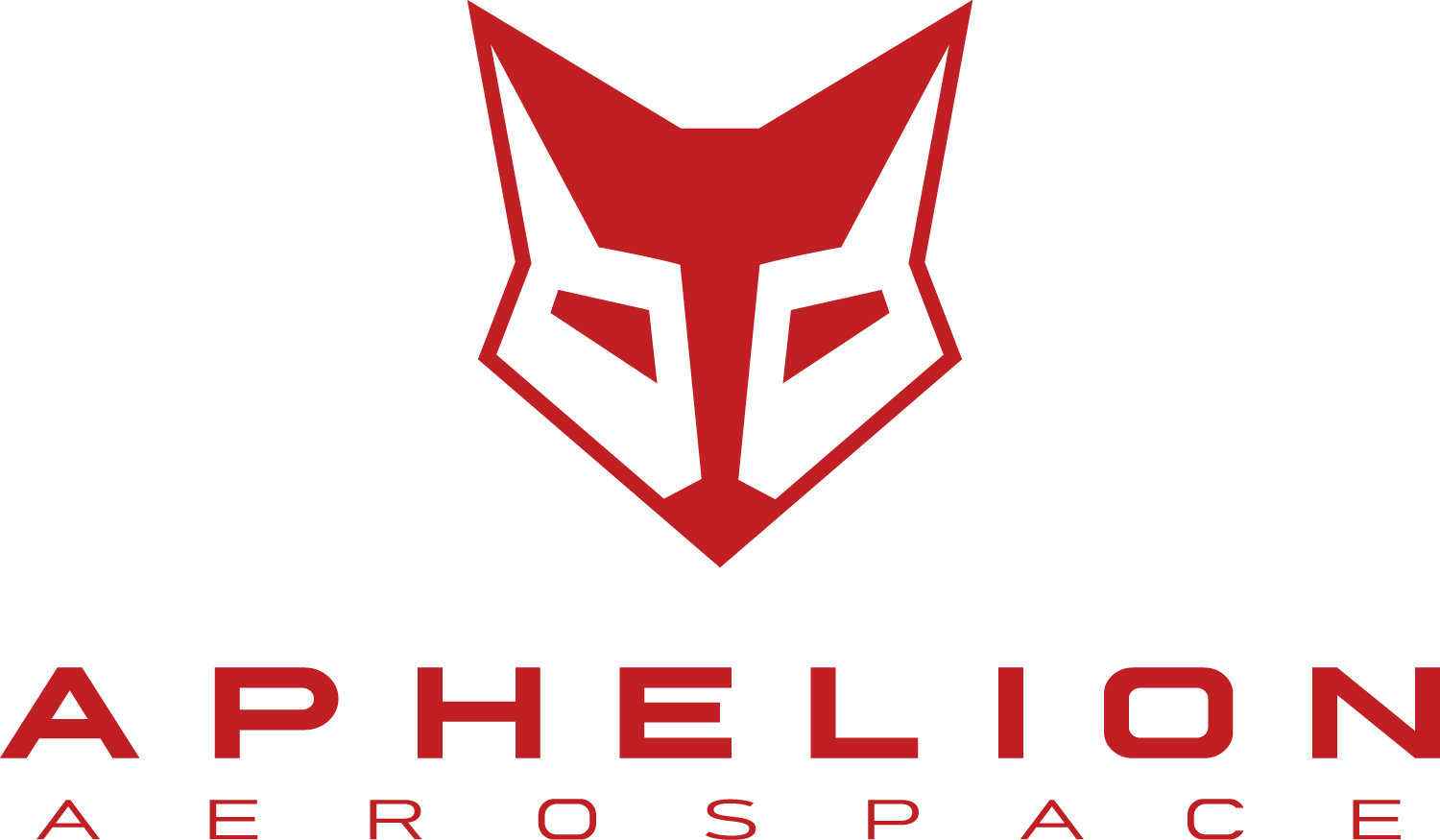
Who We Are
Aphelion Aerospace, Inc. was founded in early 2019 by a group of new and experienced aerospace engineers.
Our propulsion technology’s heritage traces back to the 1990s. Development work has been ongoing since 2017 for our low-cost environmentally-friendly propulsion systems. Since founding Aphelion, our mission has expanded from technology research to the creation of commercially-available satellite and spacecraft propulsion systems.
We also have a number of other research programs for both propulsion and spacecraft technology that are simultaneously taking place, laying down the technical foundations for future product development.
Fundamentally, Aphelion aims to miniaturize and mass-produce space propulsion technology to revolutionize access to and operations in space. Our objectives are:
- To develop and market low-cost, high-performance “green” in-space propulsion products.
- To enable significantly lower costs for launch and operations by virtue of the advantages of our technologies.
- To create a complete, customizable, turnkey satellite propulsion solution with spacecraft components, software, and support.
- To stay at the forefront of spacecraft advancements by constantly initiating experimental programs to develop the technology of tomorrow.
Our business is focused on marketing our in-space propulsion systems and pursuing aggressive R&D to enhance their capabilities to meet all industry needs.
We specialize in offering chemical propulsion systems for Earth orbiting satellites, deep-space exploration spacecraft, and other aerospace applications.
Aphelion’s COTS products include thrusters providing 0.1N, 1N, 200N, 1,000N and 10,000 thrust levels with a specific impulse that is competitive with or better than other products on the market.
The mass proliferation of space technology and easy space access brings a plethora of advantages to a wide range of clients.
- Low cost, rapid nanosatellite constellation construction and maintenance for communications, resource identification, and monitoring
- Missions that need to fly on specific orbits that are not accessible through rideshare flights or are incredibly rare, such as high inclination or polar orbits
- Irregular nanosatellite launches, potentially hazardous payloads, experimental satellites, or mission risk reduction by deploying complex mechanisms pre-flight, as allowed by the larger fairing volume
- Commercial clients looking for high-performance, low-cost propulsion systems to realize a return on investment more effectively and faster than competing technologies allow

LAUNCH SERVICES
The Helios launch service forms the core of our business. It is one of the smallest, simplest and lowest cost orbital launchers developed, opening up new possibilities for nanosatellite design and cost-effective space access. It offers dedicated flight opportunities for Cubesat class spacecraft that has a growing requirement for mission flexibility, launch slots, and turnaround time. This gives us a number of key competencies:
- Fast turnover rate and regular launches enabled by low cost per vehicle.
- Ability to conform to customer requirements and tailor launch profiles for each mission.
- Streamlined production process as a result of mass-produced components and high launch rate.
- Reduced development and manufacturing costs due to lower complexity of a small-scale vehicle.
- Lighter components and the first stage allow partial reusability and cost reduction.
A dedicated vehicle creates new possibilities in both the launch market and nanosatellite design. Its low cost and high turnover rate allow us to hold launches at consistent intervals, providing a regular transportation route for space. This cuts lead time significantly and bring a new level of convenience to space access while allowing us to streamline vehicle production and more efficiently control costs.
The dedicated nanolauncher concept has a growing appeal to commercial users and mission-critical satellites used in academia: with the definition of this class of spacecraft expanding into a plethora of potential applications, the demand for a dedicated, reliable, and flexible launch vehicle that is not interdependent with other rideshare payloads is starting to show. We complement this with a variety of services:
- System integration support and mission management services from start to launch.
- Ground support infrastructure at the launch site.
- Spacecraft integration and client consultation.
- Launch insurance.
The nanolauncher strategy relies highly on a cost-conscious development philosophy. By effective design and mass production, we are able to tap into the inherent simplicity of smaller vehicles to scale down complexities in manufacturing. Furthermore, we will see the added benefit of economies of scale. While large vehicles can launch in the single digits or low dozens every year, we will have the capability to fly in excess of 50 times a year. The large production rate, complemented by innovative production methods, allows for a true revolution in launcher costs.
Launch vehicle reusability is a key long-term objective for us in order to optimize the balance between production efficiency and flight rate. Our launch system’s small size allows us to reuse key components with minimal development cost and low mass penalties. Our studies show that the realization of this could result in a cost reduction of up to 25% per flight on top of our current estimates. By adopting a modular design methodology, we also open up future upgrade paths for larger payloads.
We are also developing the suborbital Trailblazer rocket to both serve the commercial market and provide a precursor to its larger sibling. Trailblazer shares a multitude of components with Helios, allowing us to quickly mature the technology needed for the vehicle and at the same time providing a platform for low-cost suborbital flights.
The sounding rocket market is currently restricted to flight opportunities offered by NASA and occasional commercial flights from a few companies such as Blue Origins and UP Aerospace. Trailblazer will be the only commercial-sounding rocket to offer regularly available launches and provide suborbital flight opportunities that are invaluable to microgravity research, flight testing, and the pharmaceutical industry, complementing Helios in both commercial and technological respects.
Nanosatellite Solutions
Aphelion Aerospace will bring to market its Cubesat line of products in 2021. Cubesat components by major manufacturers suffer from fragmentation and poor amalgamation of standards and software. The nanosatellite design process for academia or for commercial applications often involves jumping through different software interfaces and hardware manufacturers, making up the bulk of the cost and lead time of a project. We fill the gap by providing a product line of tightly integrated modules and a highly user-friendly user interface for programming. Plug and play operation is enabled by our software wrappers and payload processor, while complex housekeeping tasks are handled autonomously and interfaced through a simple API. This enables users to focus only on their payload instead of the spacecraft bus.
Our product line will be rapidly expanded and supplemented with a series of spacecraft attitude control systems that stems from our existing research, enabling turnkey solutions. Our technologies, which utilize advanced composite, metal, and graded-Z 3D printed materials in-orbit will provide customization services of the chassis for our customers at no additional cost, further accompanying our design philosophy of moving unnecessary work from our customers to the spacecraft manufacturer for lower lead times, ease of use, and tighter integration.

